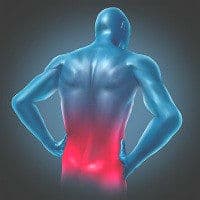How Can Chronic Pain Lead to Hepatitis C?


Contracted via blood-to-blood contact, Hepatitis C is an infectious virus of the liver that is easily passed on by sharing intravenous drug needles. At first consideration, Hepatitis C’s mode of transmission appears to have no relationship with chronic muscle, joint, nerve or other type of pain. However, chronic pain that leads to Hepatitis C infection is an alarming pattern that is emerging across the U.S.
Chronic Pain
Chronic pain is a major public health dilemma. While acute pain is a normal sensation triggered in the nervous system to alert someone of a possible injury, chronic pain is different. Going far beyond acting as an alert system, chronic pain persists by continually firing pain signals in the nervous system. Chronic pain can have many different origins including:
- Traumatic injury
- Arthritis
- Infection
- Cancer
- Surgery
- Nervous system problems
- Metabolic or hormone problems
The prevalence of chronic pain is staggering. According to a 2011 Institute of Medicine (IOM) report commissioned by Congress, more than 100 million Americans suffer from chronic pain at a cost of around $600 billion a year in medical treatments and lost productivity.
IOM committee member and chief of pain management at Stanford School of Medicine, Sean Mackey, MD, PhD, noted that about a third of the population is affected by chronic pain. That means that more people live with chronic pain than are affected by heart disease, diabetes and cancer combined. The two main drug treatments for pain are:
- Non-steroidal anti-inflammatory medications (NSAIDS)– such as Excedrin, Advil, Motrin or Aleve
- Opioids – such as the fentanyl patch, Percocet, Vicodin or OxyContin
The Danger of Narcotics
NSAIDS are effective for many types of mild pain, but they are not always strong enough for pain of a higher intensity level. A type of narcotic pain medication, opioids are frequently prescribed for those with more severe types of pain that is not relieved by NSAIDS. Blocking messages of pain sent to the brain, opioids bind to opioid receptors in the brain, spinal cord and other areas of the body.
Unfortunately, narcotics have a formidable dark side; they have a high potential for abuse, which can lead to physical dependence, addiction, overdose and even death. Claiming a surprising percentage of users in chronic pain, opioid addiction has proven to be a slippery slope:
- A prescription for a narcotic drug may finally ease a person’s pain.
- In addition to pain relief, that person may experience euphoria.
- After some time, tolerance to the narcotic may build, requiring a higher quantity of the drug to achieve the same result.
- In addition, raising the dosage can lead to an even greater level of pain relief and magnified euphoria.
- Not keeping up with the increased narcotic dosage may lead to terrible withdrawal symptoms and fuel the addiction.
- Overdosing on narcotics can be deadly.
The Crossover from Narcotics to Heroin
Despite the risks involved, there are plenty of physicians willing to prescribe opioids to people in chronic pain. According to the Substance Abuse and Mental Health Services Administration, an estimated 14 million people in the United States abuse painkillers and more than 17,000 die each year after overdosing on them.
While acknowledging that some opiate use is legitimate, officials are cracking down on doctors who prescribe to addicts with little regard for symptoms or treatment. Physicians who prescribe these pain-relieving drugs must jump through more hoops for their patients in need – and patients seeking opioid refills are increasingly challenged to keep their pain at bay. In August of 2014, the U.S. Drug Enforcement Administration sought to curb widespread opioid use even further by placing greater restrictions on the most commonly used narcotic painkillers in the U.S.
If someone’s opioid addiction begins to spiral out of control while getting a prescription renewal gets harder, they will look for alternatives. Heroin fits the bill. Opioid pain relievers are in the same chemical class as heroin, except heroin is easier and cheaper to get. According to Steve Pasierb, CEO for Partnership at Drugfree.org, “Somebody who was abusing a prescription opiate who can no longer abuse it or afford it switches to heroin because there isn’t a big difference between dirty street heroin and pure pharmaceutical opiates.”
By comparing statistics from 2007 to 2011, an annual survey by the Substance Abuse and Mental Health Services Administration clearly demonstrates a growing heroin problem. Based on this survey, the number of people who reported using heroin within the past year rose from 373,000 in 2007 to 620,000 in 2011 – a 66 percent increase in just four years.
Heroin Raises Hepatitis C Risk
Many healthcare professionals have little doubt that the boom in heroin use is a result of the emerging prescription pain pill epidemic. While there are several ways to use heroin, injecting the drug frequently triumphs. Based on a discussion of heroin, Dr. Joseph Lee, medical director for Hazelden’s youth services (a part of the Hazelden Betty Ford Foundation in Hazelden, Minnesota) says, “You can take it orally, you can snort it, you can smoke it or you can inject it…but when people get desperate enough, they want the biggest bang for their buck, so they usually graduate to injecting.”
Sadly, the following chain of events can lead to Hepatitis C:
- Seeking a doctor’s help to treat chronic pain
- Taking pain-relieving medications
- Getting relief from opioids
- Building a tolerance to opioids
- Becoming addicted to opioids
- Unable to afford or continue to get opioids
- Switching to heroin
- Injecting heroin
- Becoming infected with Hepatitis C
The most common risk factor for acquiring Hepatitis C is injection drug use.
While the number of new Hepatitis C infections had appeared to slow down, that is no longer the case. “We’ve always thought that the Hepatitis C epidemic was something that had already peaked,” said Dr. Bennet Cecil of the Hepatitis C Treatment Center in Louisville, Kentucky. “But now we’re seeing all these patients, young patients who are getting infected from injecting heroin.”
- In 2001, only about five percent of new Hepatitis C cases were people under age 30.
- In 2012, about 13.5 percent of new Hepatitis C cases were people under age 30.
Spread via blood-to-blood contact, sharing intravenous drug needles presents the largest risk for transmitting the Hepatitis C infection. Unfortunately, a growing number of people trying to manage chronic pain are ending up with far larger problems – like a raging opioid addiction and Hepatitis C.
The scope of this problematic chain of events is so large; the medical community has a lot of ground to cover before this ‘emerging epidemic’ can be addressed. With more than 100 million Americans suffering with chronic pain, something must be done to stop those who are trying to recover from a car accident, a surgery or cancer treatment, from slipping into a downhill race towards addiction, injection drug use and Hepatitis C.
http://minnesota.cbslocal.com/2014/03/04/spike-in-hep-c-cases-linked-to-heroin-use-dirty-needles/, Spike in Hep C Cases Blamed on Heroin Use, Dirty Needles, Retrieved September 12, 2014, CBS Local Media 2014.
http://online.wsj.com/articles/dea-restricts-narcotic-pain-drug-prescriptions-1408647617, DEA Restricts Narcotic Pain Drug Prescriptions, Louise Radnofsky, Joseph Walker, Retrieved September 13, 2014, Dow Jones & Company, Inc., 2014.
http://www.cincinnati.com/story/news/2014/06/18/northern-kentucky-health-department-heptatis-c/10793927/, Hepatitis C testing continues as NKY rate soars, Terry DeMio, Retrieved September 12, 2014, www.cincinnati.com, 2014.
http://www.hazelden.org/web/public/josephlee.page, Joseph Lee, MD, ABAM, Retrieved September 13, 2014, Hazelden Betty Ford Foundation, 2014.
http://www.mercurynews.com/health/ci_26482568/bay-area-news-group-investigation-painkillers-toll-steadily, Opiate overdoses: Painkillers' toll steadily rising in Bay Area, Karina Ioffee, Retrieved September 13, 2014, San Jose Mercury News, 2014.
http://www.myfoxdc.com/story/23088579/more-people-hooked-on-heroin, More People Hooked on Heroin, Sherri Ly, Received September 13, 2014, Fox Television Stations, Inc., 2014.
http://www.nola.com/crime/index.ssf/2014/04/snapshot_of_heroin_use_deaths.html, Snapshot of heroin use, deaths in 26 states, including Louisiana, Retrieved September 12, 2014, The Associated Press, 2014.
http://www.painmed.org/patientcenter/facts_on_pain.aspx, AAPM Facts and Figures on Chronic Pain, Retrieved September 13, 2014, The American Academy of Pain Medicine, 2014.
http://www.wave3.com/story/24038227/hepatitis-c-heroin-use-rising, Cases of hepatitis C & Heroin Use Rising, Natalia Martinez, Retrieved September 12, 2014, Worldnow and WAVE, 2014.
http://www.webmd.com/pain-management/guide/narcotic-pain-medications, Opiod (Narcotic) Pain Medications, Retrieved September 13, 2014, WebMD, LLC, 2014.
http://www.webmd.com/pain-management/news/20110629/100-million-americans-have-chronic-pain, 100 Million Americans Have Chronic Pain, Salynn Boyles, Retrieved September 13, 2014, WebMD, LLC, 2014.







